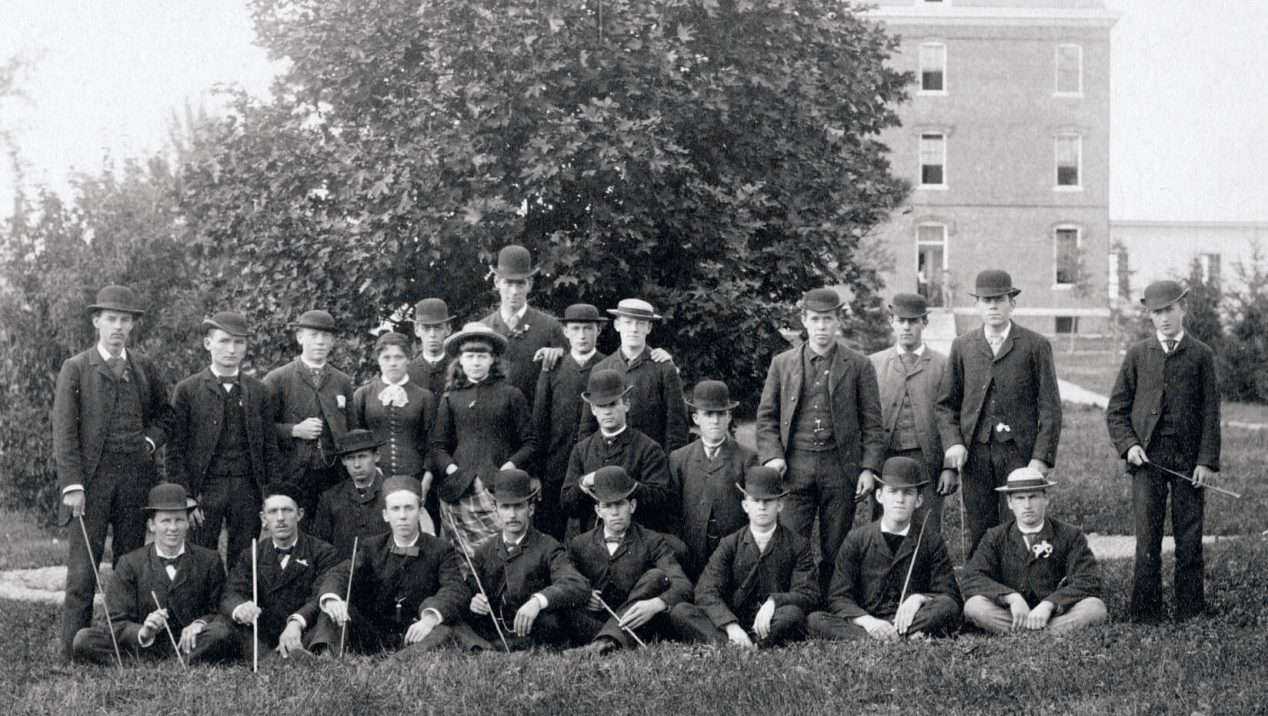
1887 Commencement
1885–1894
- Commencement activities began Saturday and extended through Thursday in 1885. A college orchestra concert, cadet drills, a presidential reception, fraternity open houses and class day were some of the featured events, in addition to commencement, which included a dinner.
- In 1886, the entire 51-cow herd at the college was exterminated due to tuberculosis.
- In 1887, Congress passed the Hatch Act, which provided $15,000 annually which was used to fund the Maine Agricultural and Forest Experiment Station, which was founded as a division of the university.
- The 1887–88 state appropriation to the college was $34,600. (In comparison, the 1878–79 appropriation was $6,500).
- Coburn Hall was completed in 1888. It was named in memory of Abner Coburn, the 30th Maine governor.
- President Fernald referred to 1890 as a transition between the college’s pioneer period and period of development.
- In 1890, the second Morrill Act provided the college with additional funding. The Legislature suspended tuition for a time.
- White Hall burned in 1890. Wingate Hall was built on the same site; it was completed in 1891. A new dairy building and a horticulture building were also built.
- By 1892, 367 people had graduated from the college. The most-popular career choices of the 348 living graduates were civil engineer (72), mechanical engineer (26), teacher (22), drafter (18), farmer (17) and lawyer (17).
- In 1892, the football team played, and lost, two games.
- Dr. Abram Winegardner Harris became president in 1893.
- In 1894, courses were added in library economy, pharmacy and electrical engineering.
